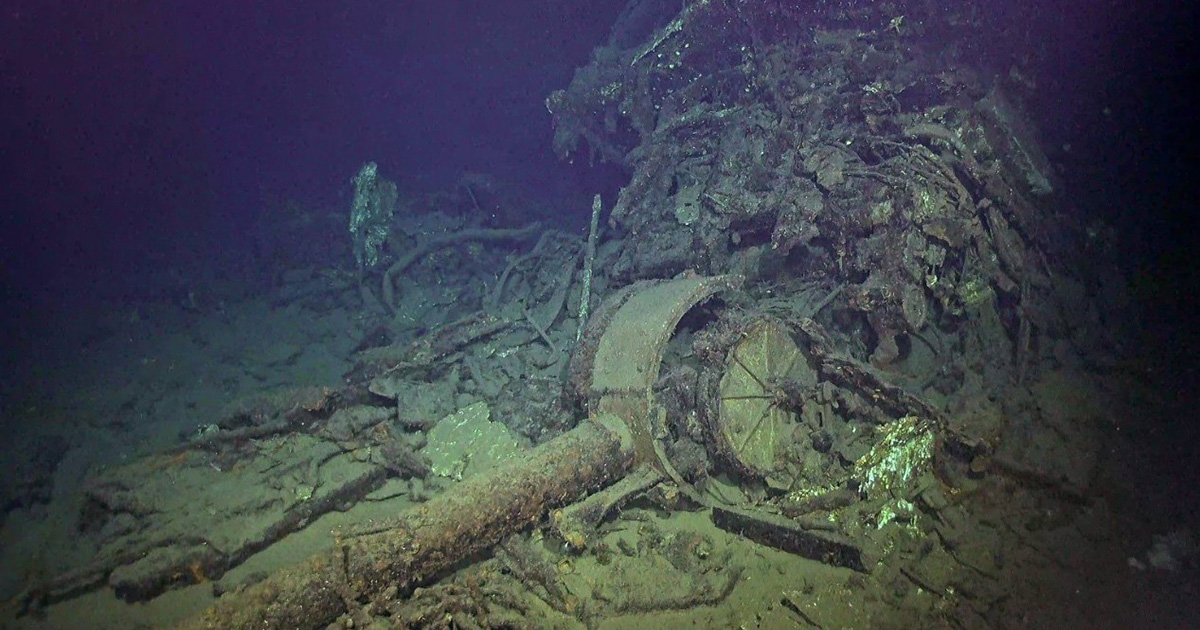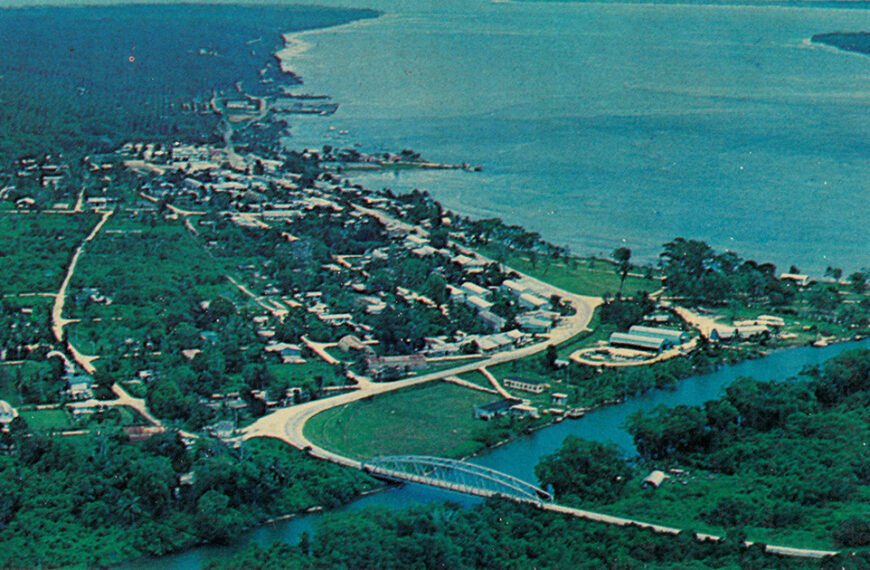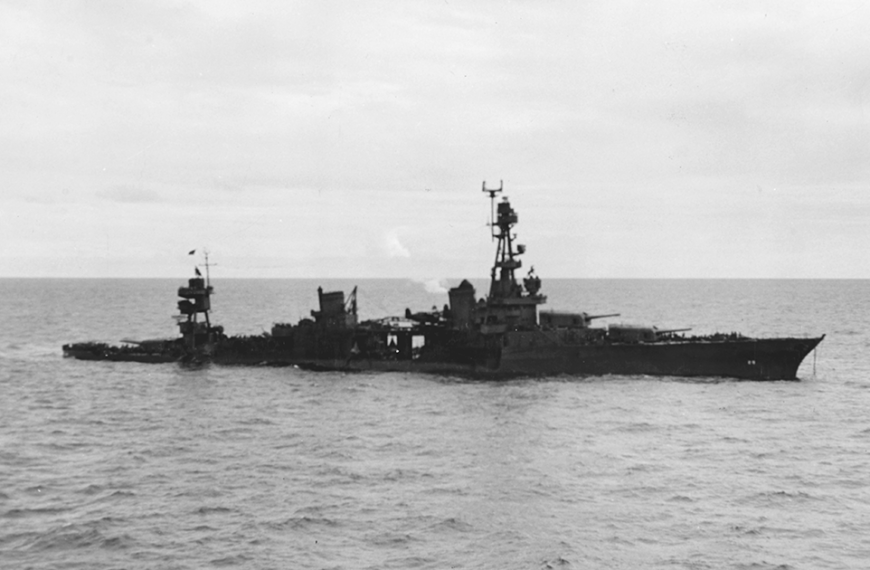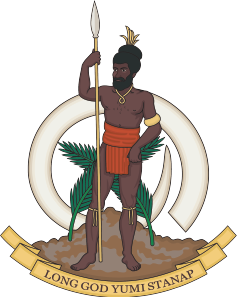One of the Museum’s long-time supporters is the wonderfully enthusiastic Tammi Hedrick. She maintains the ‘Project USS Strong’ website, which is a fabulous repository of all things about the destroyer USS Strong (DD-467) – particularly for anyone who had a relative who served on the ship.
Tammi has done some remarkable work researching the ship, its history, personnel and the circumstances leading up to its sinking by a long range Japanese torpedo on July 5, 1943. Tammi’s great uncle Billy Hedrick was an Ensign and Junior Communications Officer on the Strong when it went down between Kolombangara and New Georgia in the Solomon Islands.
One of the amazing stories to come out of that tragedy, was that of Lieutenant Hugh Barr Miller Jr., U.S. Naval Reserves and his incredible survival story.
Having endured the attack and subsequent sinking of the Strong, Miller ended up on one of two life nets and some pieces of life raft, with 22 other crewmen. Eleven days later five of them – including Miller – washed up on Arundel Island, far behind the Japanese lines. Hardly the safest place to wash up, but at least it was land.
However, Miller was injured internally and shaken by a “severe haemorrhage”, to the point where he thought he was going to die. Being the senior officer of the group he ordered the four men to take all the remaining equipment and rations and head to a coconut plantation down the coast, hopefully to find help.
Miller gave his shoes to one survivor but hung onto a pocket knife with broken blades and some Japanese beer bottles and two old cracker tins he used to store water in.
Following an emotional parting, Miller was left to die – or so he thought. He recounted later, “…figuring I wouldn’t last long and that I might as well be as comfortable as possible, I drank all my water that first day—the 15th—after the boys left.”
But the next day, Miller woke up to his surprise and actually began regaining strength. Two days later he was still alive. “I got to thinking about myself then and I decided I wasn’t showing up as the kind of guy I had thought I was, just to lie down and die without a fight,” Miller wrote later.
Lieutenant Miller began to take stock of his situation and soon realised that he was in the box seat to observe Japanese operations on nearby Kolobangara Island. The intelligence he could gather would be invaluable to the Allied forces, if he could just stay alive long enough to report back with his observations.
In his own words, “So I held a little conversation with the Lord, lying there on the edge of the jungle that evening, and I told Him that if He’d give me a little water, I’d get up out of there and do something about this situation.”
Miller went to sleep, and sure enough, by about 9.00pm it began to rain. And rain and rain. In fact for four hours the water bucketed down. Miller made the most of it and drank four tins of water, just as soon as they filled up, before going back to sleep.
The following morning after a “leisurely breakfast in bed,” consisting of more water from the cracker tin, Miller decided to hobble to a spring around two kilometres away, with some help from a staff the men had made for him before they left. It was an arduous walk as he was weak from lack of food and the coral and rocks soon shredded his bare feet. But he battled on and made it to the stream just before nightfall. Totally exhausted from his ordeal, he filled up on water and lay under a log and went to sleep.
The next day, things began to look up. Miller managed to crack open a coconut and ate some of the coconut meat inside, which was the first solid food he’d had in two weeks. But of greater importance was finding shelter. That would not only protect him from the elements, but more importantly hide him from Japanese patrols, which had obviously been on the island given the beer bottles and an old Japanese blanket he found near the spring.
Sure enough, it wasn’t long before a small Japanese patrol came down the beach and Miller quickly retreated to the jungle.
The patrol soon passed and if he was to survive, Miller knew he had to find a better place to shelter. For five days he searched around the spring for the perfect place. He soon found a pocket among some “great” mangrove trees, “a natural shelter, protected on all sides by thickets and branches.” It even had its own lookout, where high up, two branches crossed over each, creating a perfect perch to watch for enemy patrols.
Soon, a US PT boat attacked Japanese troop barges and supply boats in Hathorn Sound, which lay right in front of his makeshift camp. When it was all over it gave Lieutenant Miller the chance to pick over the debris that had washed up on the beach. From the body of a Japanese soldier he obtained shoes and socks, five cans of tinned beef, a belt, a bayonet, a grenade holder and two grenades.
Things were certainly looking up for Miller. Which is exactly what he did when he heard an approaching aircraft. As luck would have it, it turned out to be a US aircraft. Miller signalled to the pilot, who saw him and dropped a small package containing some iodine and Army D rations. That iodine probably saved Miller’s life. He painted his bloodied and infected feet with it, which helped the cuts heal. According to Miller, “they had begun to fester and I was afraid I wouldn’t be able to get around much longer.”
With a new found strength and his feet heeling well, it was payback time.
Miller began attacking the contingent of Japanese soldiers on the island. When a five-man Japanese patrol went out to investigate the body that had been stripped of its useful equipment and supplies, Miller soon took care of them all with one grenade.
He then stripped those bodies of everything he could possibly use and buried the bodies. Soon, more patrols were sent out to investigate the five men that were now missing. Miller just hid and eluded the Japanese efforts to find whoever was harassing them.
Miller continued arming himself with whatever washed ashore and soon had enough in his stash to really start making a serious nuisance of himself.
After discovering Japanese machine-gun nests along the shoreline, he went on the attack, lobbing grenades into them, just as American aircraft flew overhead. This was followed up with what appeared, by all intents and purposes, to be “bombing runs” on the nights of August 10, 12, and 14.
The following morning, a Marine Corps Avenger pilot spotted Miller frantically waving a towel at him and realised he was a westerner, “by my red beard and shining forehead.”
It wasn’t long before a US Grumman J2F ‘Duck’ rescue seaplane arrived. It landed just 2,000 yards from the Japanese base on Kolombangara Island and seemed to have landed without being noticed by the Japanese. According to Miller, ” the crew of that plane, composed of absolutely fearless men, didn’t hesitate an instant.”
They soon saw Miller was too weak to make it out to them so they inflated a rubber boat and rowed in to get him.
Miller hurried back to his campsite and collected all the enemy items he could carry and made his way back to the beach. He met Marine Corps Major Vernon A. Peterson, commander of the rescue party and explained to him the importance of the items he had from an intelligence gathering point of view. Peterson soon loaded up the rubber boat and took everything out to the Duck , before returning for Miller.
The rescue party soon took off and remarkably they didn’t encounter any resistance from nearby Japanese forces.
Miller’s first request of his rescuers, by the way, was for a cigarette. And then food. He recounted later, “We had returned to Munda in time for lunch that day, August 16, and it was my first real meal since the night of July 4. I had lost forty pounds during the forty-three days I was missing, but I started then and there to get it back.”
Miller spent two days at Munda on New Georgia Island recovering from his ordeal. But more importantly, he spent most of that time debriefing everything he saw, providing vital intelligence information to the US Navy.
Other survivors from the Strong were picked up by ships, while others made it to nearby islands. However, all weren’t so lucky and 46 officers and sailors including Tammi Hendrick’s great uncle Ensign Billy Hendrick – lost their lives that night of July 5, 1943.
Miller managed to survive for 39 days on Arundel island. His extraordinary efforts did not go unnoticed and in spite of internal injuries that he suffered during Strong’s sinking – and for his bravery – Lt. Hugh Barr Miller Jr was later awarded the Navy Cross, personally bestowed on him by United States First Lady, Eleanor Roosevelt. Hugh Barr Miller passed away June 21, 1978.








